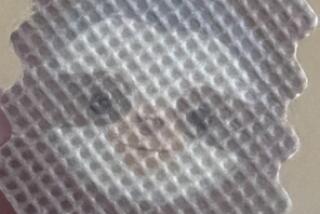Skin Patches Proving Popular Aid for Those Trying to Quit Smoking
- Share via
NEW YORK — Smokers who want to quit are snapping up--and sticking on--nicotine-bearing skin patches that help them kick the habit.
The surprisingly high demand is for a product that leads to long-term success only about one-third of the time. But smoking experts say even that quit rate is encouraging for an addiction that’s so hard to break.
The patches, stuck onto the skin by adhesive, release controlled amounts of nicotine into the smoker’s bloodstream. That reduces tobacco craving and other withdrawal symptoms, allowing the smoker to quit cigarettes cold-turkey and to concentrate on how to stay abstinent when patch therapy ends.
Two of the three patch brands now on the market are intended to wean ex-smokers off nicotine by providing reduced dosages later in therapy.
The patches, which require a doctor’s prescription, are replaced daily. Current brands include one type to be used for six to eight weeks, costing around $200 for the course of therapy, with the others recommended for 10 to 12 weeks at a cost of around $250 to $350, patch companies say.
While not all health insurance plans cover nicotine patch therapy, experts say smokers should consider the patch cost in light of what they would otherwise spend on cigarettes.
Patches went on the market last December and have earned more than $350 million for patch companies so far. Analysts call the initial sales impressive, and James Keeney of Mabon Securities in Boston projected that in 1995, annual domestic patch sales could reach $1 billion.
Pharmacists and pharmaceutical distributors report such high demand that “they are not able to keep the patches on the shelves,” said analyst Jeffrey Kraws at Alex. Brown and Sons in New York. “The demand has certainly far exceeded analyst’s projections early on,” he said.
Experts said that while the patches help smokers give up tobacco, the effort to quit still requires work. And even so, they said, only one-third will remain abstinent for at least a year.
That proportion may seem small, but it’s twice as good as the rate for smokers who used placebo patches in studies, who in turn fared better than smokers who knew they were getting no treatment, said Saul Shiffman, director of the Smoking Research Group in the University of Pittsburgh’s psychology department.
“It just reflects the fact that quitting smoking permanently is extraordinarily difficult,” Shiffman said. “The nicotine patch can help.”
Shiffman and other experts called the patch an improvement over nicotine gum, mainly because it is easier to use correctly. “The patch has the virtue of being very easy; you just slap one on in the morning,” Shiffman said.
The patch should be only one part of the smoker’s habit-kicking regimen, so the patches come with such aids as booklets, audiotapes, referrals to stop-smoking programs and access to telephone counseling. The idea is to change behavior by getting at the psychological roots of smoking addiction.
“Most smokers don’t just have the problem of relieving withdrawal at a general level; they have triggers to smoke” like stress, cigarette ads or smoking friends, said Nina Schneider, chief of the nicotine dependence research unit at the Veterans Affairs Medical Center Brentwood Division in Los Angeles.
Smokers must learn “to stop themselves when they’re just about to say, ‘To hell with it, I’m tired of being deprived,’ and they’re just about to reach for a cigarette,” she said.
Coping strategies include calling a friend or finding a distraction, Schneider said. “When you’re really in the midst of an urge to smoke, one thing that can really stop you is reminding yourself that you don’t really want to go through this (quitting) process again.”
Patch users can also chew nicotine gum as a fast response to such emergencies, and researchers are studying whether combining the patch and the gum works better than either therapy alone, Schneider said. Some doctors already prescribe them in combination.
Before smokers consider a nicotine patch, they should try quitting cold-turkey on their own, Schneider said.
Ninety-five percent of smokers who quit do so on their own, said smoking researcher Dr. John R. Hughes of the University of Vermont College of Medicine. If that fails once or twice, a smoker should try a good group-support program or the patch, or both, he said.
In any case, smokers should not get discouraged if an effort to quit fails, Hughes said. On average, it takes three attempts to kick the habit for good, and it may take six or seven, he said.
“People need to realize that a failure doesn’t mean you should stop trying and you’re in a hard-core group that’s never going to quit,” Hughes said.
“Stopping smoking is like riding a bicycle. Very few people are successful the very first time. . . . Bicycle riders are those people who got back on the bicycle and tried again. It’s not as much skill as it is persistence.”
More to Read
Sign up for Essential California
The most important California stories and recommendations in your inbox every morning.
You may occasionally receive promotional content from the Los Angeles Times.









